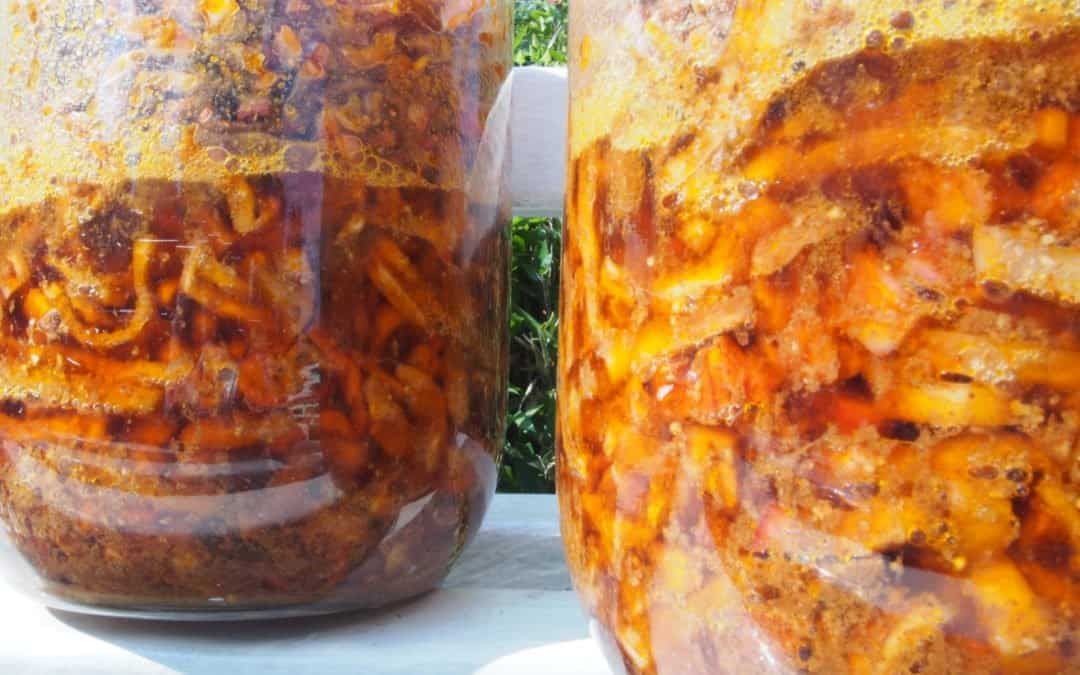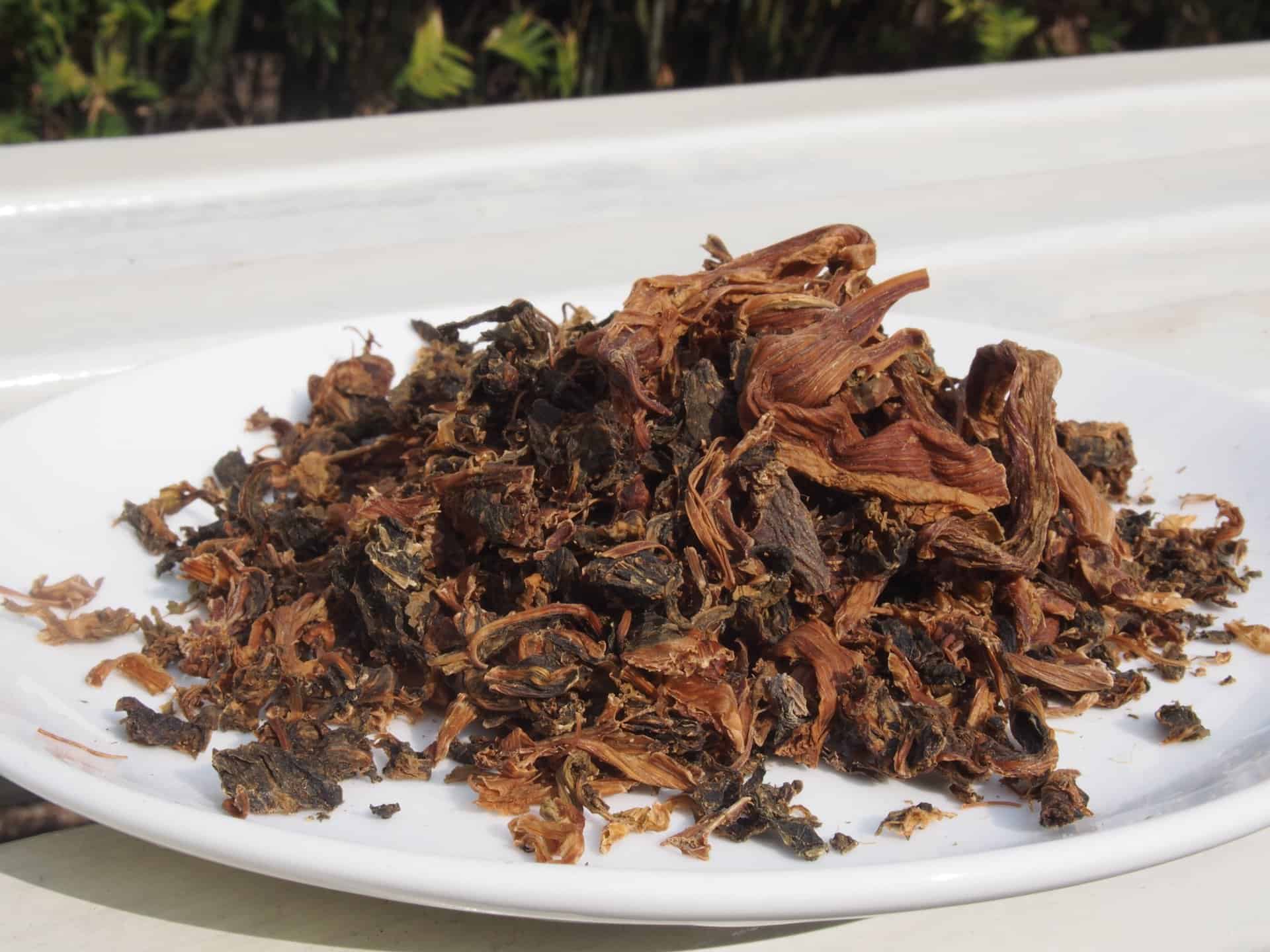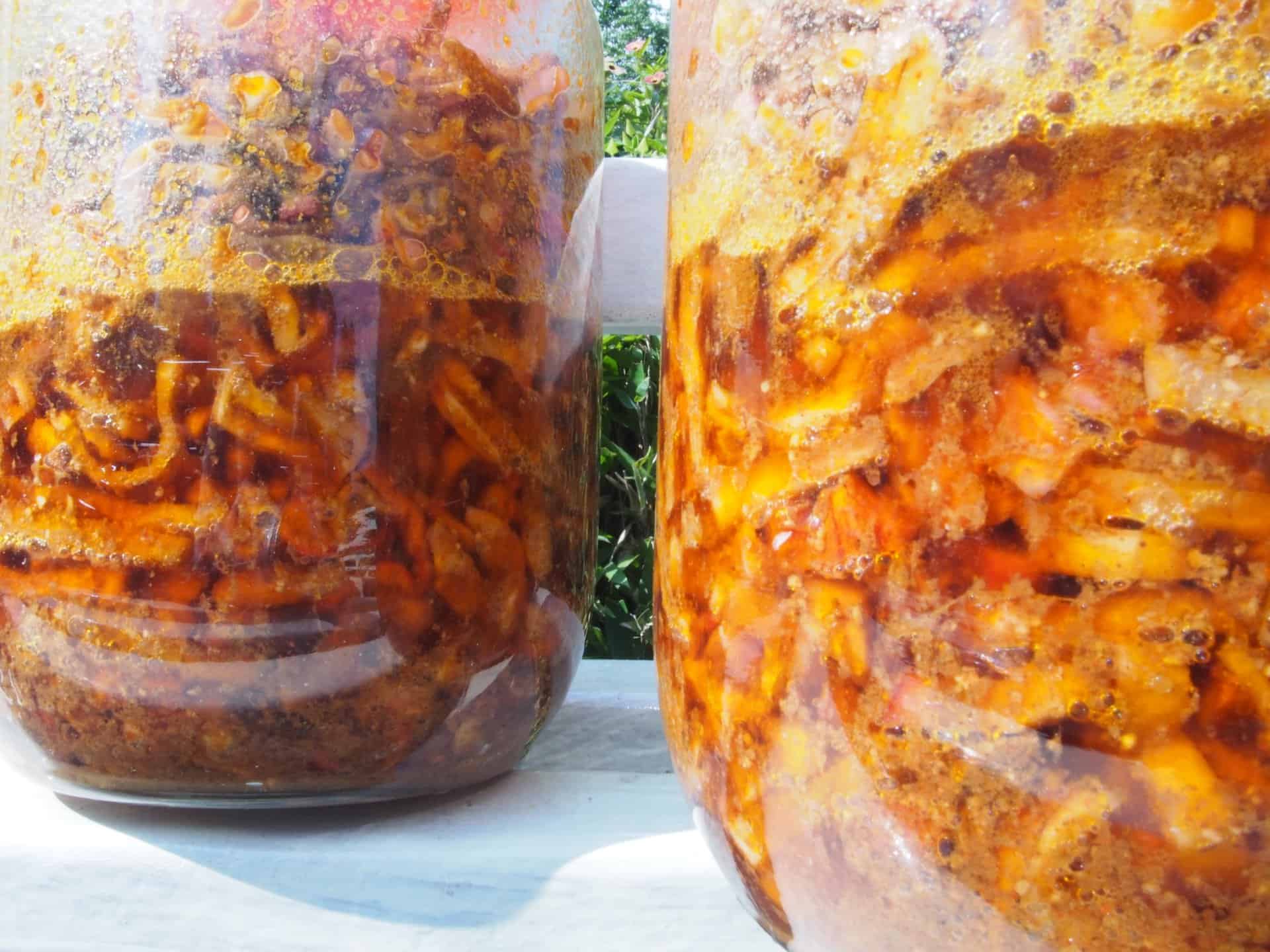
Fermented Foods – Producing Local Radish Pickle (Mula Achar)
Old cultural technique: Fermented Foods
Fermentation is an old cultural technique that has been used since the Neolithic age for food preservation as well as for producing alcoholic beverages.[1] Technically speaking fermentation is the process of converting carbohydrates to acids or alcohol using microorganisms under anaerobic conditions (i.e. in the absence of air).[2] These microorganisms can be yeast or bacteria.
Besides wine and beer many renowned food items are a result from fermentation, such as: soy sauce, sauerkraut, kefir, kumis (fermented mares’milk popular in Central Asia and Mongolia), injera (a sourdough-risen flatbread) and achar (Indo-Aryan word for pickles). The fermented foods can be based on beans, grains, dairy or meat products.
At the Bamboo Retreat fermentation is used to preserve produce from the property’s garden, mostly vegetables. The latest vegetable in season is mula (Nepali), a local variety of radish, of which the leaves as well as the roots can be processed.

The leaves are partly dried in the sun.

Then crushed in a mortar and put into a closed transparent container. The container is kept in the sun for 15-20 days for fermentation.

When the process is deemed finished (i.e. when the green turns brownish and lighter) the fermented leaves are dried and kept for storage. Those fermented dried leaves are used for soups and achar at times when leafy vegetables are harder to come by.

The roots are used to prepare achar. For this they are first cut into small pieces and dried in the sun for two days.

In a second step, mustard oil is mixed with salt, turmeric, chilli and ground panch phoron, a spice-blend, literally meaning five spices. This blend is popular in (North)Eastern India and contains in equal parts: cumin, brown mustard, fenugreek, nigella and fennel. The radish is added and filled into glass containers. These are stored in the sun in order for the fermentation process to unfold.

When the pickles are deemed ready the containers are moved to cold storage where they can be kept for a couple of months.
Fermented foods stabilises the immune system
Fermenting vegetables is not only a method of food preservation. Fermented foods are said to have considerable health benefits. They are rich in probiotic bacteria that support the intestinal flora. As sugar and starches are broken down through fermentation the resulted food items are easier to digest. Fermentation can equally increase the availability of vitamins and minerals for absorption. The consumption of probiotic-rich food is also supporting the gut lining as natural barrier, which makes the immune system more robust.[3]
By employing fermentation techniques the Bamboo Retreat uses traditional local knowledge of food preservation to provide healthy meals for guests and staff alike.
[1] https://www.livehistoryindia.com/history-in-a-dish/2017/07/06/pickle-preserved-by-history
[2] https://en.m.wikipedia.org/wiki/Fermentation
[3] https://www.bbcgoodfood.com/howto/guide/health-benefits-offermenting